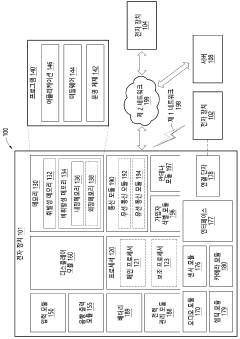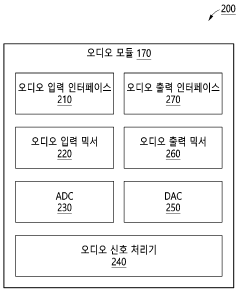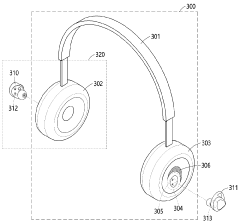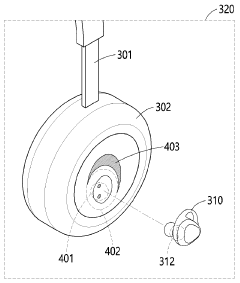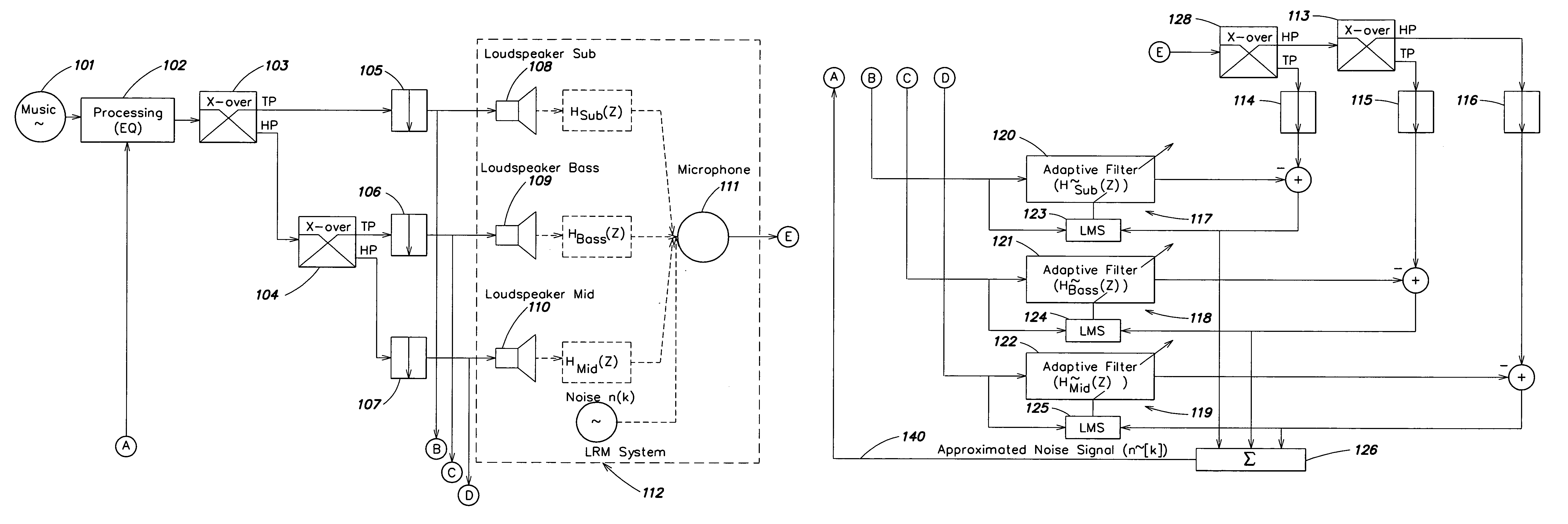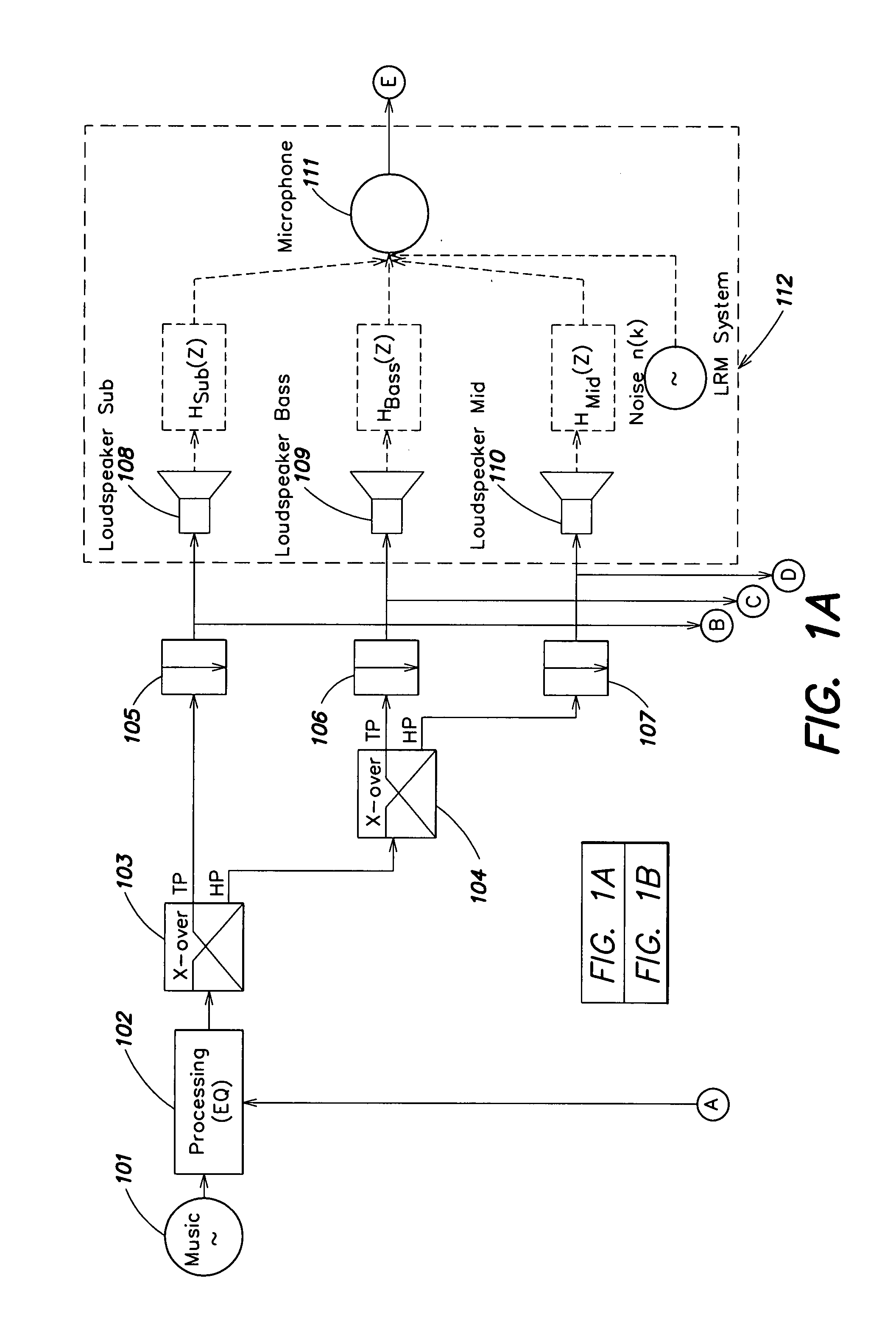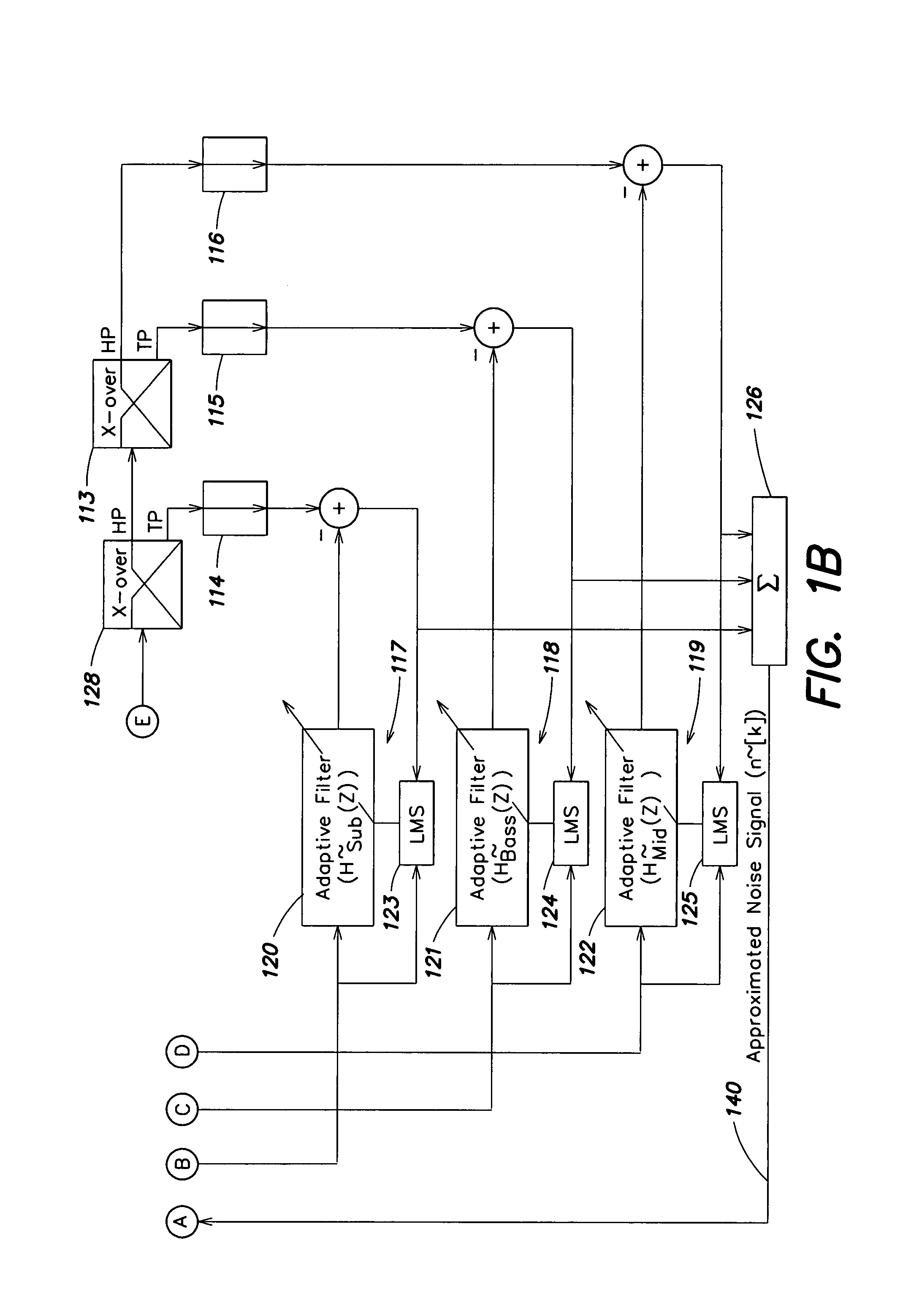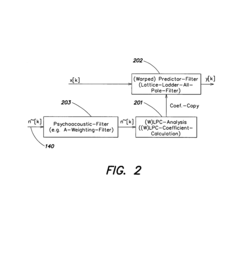How to Improve Audio Systems with LDAC Integration?
JUL 4, 20258 MIN READ
Generate Your Research Report Instantly with AI Agent
Patsnap Eureka helps you evaluate technical feasibility & market potential.
LDAC Technology Evolution and Objectives
LDAC, developed by Sony in 2015, represents a significant leap in wireless audio technology. This codec aims to deliver high-resolution audio over Bluetooth connections, addressing the limitations of previous compression methods. The evolution of LDAC technology is closely tied to the growing demand for superior audio quality in wireless devices, particularly as high-resolution audio formats gain popularity among consumers.
The primary objective of LDAC integration in audio systems is to bridge the gap between wired and wireless audio quality. By employing a variable bit rate up to 990 kbps, LDAC can transmit up to three times more data than conventional Bluetooth audio codecs. This increased data transfer capability allows for the transmission of 24-bit/96 kHz audio content, which is considered high-resolution audio.
LDAC's development trajectory has been marked by continuous improvements in efficiency and compatibility. Initially exclusive to Sony devices, the technology has since been adopted by various manufacturers, becoming part of the Android Open Source Project (AOSP) in 2017. This integration has significantly expanded LDAC's reach, making it available on a wide range of Android devices and audio equipment.
The technology's evolution has also focused on reducing latency and improving power efficiency, crucial factors for mobile devices and wireless headphones. Recent iterations of LDAC have introduced adaptive bit rate selection, allowing the codec to dynamically adjust its transmission rate based on the connection quality and device capabilities. This adaptive approach ensures optimal performance across various usage scenarios.
Looking forward, the objectives for LDAC technology include further reducing latency to levels comparable to wired connections, expanding compatibility with more devices and operating systems, and potentially increasing the maximum bit rate to accommodate even higher resolution audio formats. There is also a push towards improving LDAC's energy efficiency to extend battery life in wireless audio devices.
Another key objective is enhancing LDAC's integration with emerging audio technologies, such as 3D audio and personalized sound profiles. This integration aims to create more immersive and tailored audio experiences for users, leveraging the high-quality audio transmission capabilities of LDAC.
As the audio industry continues to evolve, LDAC technology is expected to play a crucial role in shaping the future of wireless audio. Its ongoing development reflects the broader trend towards high-fidelity, wireless audio solutions that can meet the demands of increasingly discerning consumers and audiophiles alike.
The primary objective of LDAC integration in audio systems is to bridge the gap between wired and wireless audio quality. By employing a variable bit rate up to 990 kbps, LDAC can transmit up to three times more data than conventional Bluetooth audio codecs. This increased data transfer capability allows for the transmission of 24-bit/96 kHz audio content, which is considered high-resolution audio.
LDAC's development trajectory has been marked by continuous improvements in efficiency and compatibility. Initially exclusive to Sony devices, the technology has since been adopted by various manufacturers, becoming part of the Android Open Source Project (AOSP) in 2017. This integration has significantly expanded LDAC's reach, making it available on a wide range of Android devices and audio equipment.
The technology's evolution has also focused on reducing latency and improving power efficiency, crucial factors for mobile devices and wireless headphones. Recent iterations of LDAC have introduced adaptive bit rate selection, allowing the codec to dynamically adjust its transmission rate based on the connection quality and device capabilities. This adaptive approach ensures optimal performance across various usage scenarios.
Looking forward, the objectives for LDAC technology include further reducing latency to levels comparable to wired connections, expanding compatibility with more devices and operating systems, and potentially increasing the maximum bit rate to accommodate even higher resolution audio formats. There is also a push towards improving LDAC's energy efficiency to extend battery life in wireless audio devices.
Another key objective is enhancing LDAC's integration with emerging audio technologies, such as 3D audio and personalized sound profiles. This integration aims to create more immersive and tailored audio experiences for users, leveraging the high-quality audio transmission capabilities of LDAC.
As the audio industry continues to evolve, LDAC technology is expected to play a crucial role in shaping the future of wireless audio. Its ongoing development reflects the broader trend towards high-fidelity, wireless audio solutions that can meet the demands of increasingly discerning consumers and audiophiles alike.
High-Resolution Audio Market Analysis
The high-resolution audio market has experienced significant growth in recent years, driven by increasing consumer demand for superior sound quality and immersive audio experiences. This trend has been further accelerated by the widespread adoption of streaming services and the proliferation of high-quality audio devices. The global high-resolution audio market is expected to continue its upward trajectory, with projections indicating substantial expansion over the next five years.
One of the key factors contributing to market growth is the rising popularity of lossless audio formats, which preserve the original recording quality without compression. This shift towards higher fidelity audio has created new opportunities for manufacturers and service providers across the audio ecosystem. Major streaming platforms have responded to this demand by introducing high-resolution audio tiers, offering listeners access to studio-quality recordings.
The integration of advanced audio codecs, such as LDAC, has played a crucial role in enhancing the high-resolution audio market. LDAC, developed by Sony, allows for the transmission of high-quality audio over Bluetooth connections, addressing one of the primary limitations in wireless audio delivery. This technology has gained traction among audiophiles and casual listeners alike, driving the adoption of compatible devices and contributing to market expansion.
Consumer electronics manufacturers have capitalized on this trend by introducing a wide range of high-resolution audio-capable devices, including smartphones, digital audio players, and wireless headphones. These products often feature dedicated digital-to-analog converters (DACs) and amplifiers optimized for high-resolution playback, further enhancing the listening experience.
The automotive sector has also emerged as a significant growth area for high-resolution audio. Luxury car manufacturers are increasingly incorporating high-end audio systems as standard features or premium upgrades, recognizing the value that audiophiles place on in-car entertainment. This trend is expected to trickle down to mid-range vehicles, expanding the market reach of high-resolution audio technologies.
Despite the positive outlook, challenges remain in the high-resolution audio market. These include the need for greater consumer education regarding the benefits of high-resolution audio, as well as addressing compatibility issues between different devices and formats. Additionally, the higher costs associated with high-resolution audio equipment and content may limit widespread adoption in price-sensitive markets.
One of the key factors contributing to market growth is the rising popularity of lossless audio formats, which preserve the original recording quality without compression. This shift towards higher fidelity audio has created new opportunities for manufacturers and service providers across the audio ecosystem. Major streaming platforms have responded to this demand by introducing high-resolution audio tiers, offering listeners access to studio-quality recordings.
The integration of advanced audio codecs, such as LDAC, has played a crucial role in enhancing the high-resolution audio market. LDAC, developed by Sony, allows for the transmission of high-quality audio over Bluetooth connections, addressing one of the primary limitations in wireless audio delivery. This technology has gained traction among audiophiles and casual listeners alike, driving the adoption of compatible devices and contributing to market expansion.
Consumer electronics manufacturers have capitalized on this trend by introducing a wide range of high-resolution audio-capable devices, including smartphones, digital audio players, and wireless headphones. These products often feature dedicated digital-to-analog converters (DACs) and amplifiers optimized for high-resolution playback, further enhancing the listening experience.
The automotive sector has also emerged as a significant growth area for high-resolution audio. Luxury car manufacturers are increasingly incorporating high-end audio systems as standard features or premium upgrades, recognizing the value that audiophiles place on in-car entertainment. This trend is expected to trickle down to mid-range vehicles, expanding the market reach of high-resolution audio technologies.
Despite the positive outlook, challenges remain in the high-resolution audio market. These include the need for greater consumer education regarding the benefits of high-resolution audio, as well as addressing compatibility issues between different devices and formats. Additionally, the higher costs associated with high-resolution audio equipment and content may limit widespread adoption in price-sensitive markets.
LDAC Integration Challenges and Limitations
While LDAC technology offers significant improvements in wireless audio quality, its integration into audio systems presents several challenges and limitations that need to be addressed. One of the primary challenges is compatibility issues with existing devices and infrastructure. Many older devices and audio systems lack the necessary hardware and software support for LDAC, limiting its widespread adoption and creating fragmentation in the market.
Power consumption is another significant concern when integrating LDAC into audio systems. The high-quality audio transmission requires more processing power and bandwidth, which can lead to increased battery drain on both the transmitting and receiving devices. This is particularly problematic for portable audio devices and wireless headphones, where battery life is a critical factor for user satisfaction.
Latency is a persistent challenge in LDAC integration, especially for applications that require real-time audio processing, such as gaming or video conferencing. While LDAC offers improved latency compared to some other Bluetooth codecs, it may still introduce noticeable delays in audio transmission, affecting the overall user experience in time-sensitive applications.
The complexity of LDAC implementation poses challenges for manufacturers and developers. Integrating LDAC into existing audio systems requires specialized knowledge and expertise, which can increase development costs and time-to-market for new products. This complexity may also lead to potential firmware issues and the need for frequent updates to maintain optimal performance.
Bandwidth limitations in certain environments can impact LDAC's performance. In areas with high wireless interference or congested networks, maintaining the high bitrate required for LDAC transmission may be challenging, potentially resulting in audio dropouts or quality degradation. This limitation is particularly relevant in crowded urban areas or large venues with multiple wireless devices in use.
Licensing and intellectual property considerations also present challenges for LDAC integration. As a proprietary technology developed by Sony, manufacturers must navigate licensing agreements and potential royalty fees to incorporate LDAC into their products. This can create barriers to entry for smaller companies and limit the overall ecosystem of LDAC-compatible devices.
Lastly, the lack of universal support across all operating systems and platforms poses a significant limitation. While LDAC has gained traction in the Android ecosystem, its adoption in other platforms, such as iOS, remains limited. This fragmentation in support can lead to inconsistent user experiences and hinder the technology's overall market penetration.
Power consumption is another significant concern when integrating LDAC into audio systems. The high-quality audio transmission requires more processing power and bandwidth, which can lead to increased battery drain on both the transmitting and receiving devices. This is particularly problematic for portable audio devices and wireless headphones, where battery life is a critical factor for user satisfaction.
Latency is a persistent challenge in LDAC integration, especially for applications that require real-time audio processing, such as gaming or video conferencing. While LDAC offers improved latency compared to some other Bluetooth codecs, it may still introduce noticeable delays in audio transmission, affecting the overall user experience in time-sensitive applications.
The complexity of LDAC implementation poses challenges for manufacturers and developers. Integrating LDAC into existing audio systems requires specialized knowledge and expertise, which can increase development costs and time-to-market for new products. This complexity may also lead to potential firmware issues and the need for frequent updates to maintain optimal performance.
Bandwidth limitations in certain environments can impact LDAC's performance. In areas with high wireless interference or congested networks, maintaining the high bitrate required for LDAC transmission may be challenging, potentially resulting in audio dropouts or quality degradation. This limitation is particularly relevant in crowded urban areas or large venues with multiple wireless devices in use.
Licensing and intellectual property considerations also present challenges for LDAC integration. As a proprietary technology developed by Sony, manufacturers must navigate licensing agreements and potential royalty fees to incorporate LDAC into their products. This can create barriers to entry for smaller companies and limit the overall ecosystem of LDAC-compatible devices.
Lastly, the lack of universal support across all operating systems and platforms poses a significant limitation. While LDAC has gained traction in the Android ecosystem, its adoption in other platforms, such as iOS, remains limited. This fragmentation in support can lead to inconsistent user experiences and hinder the technology's overall market penetration.
Current LDAC Implementation Strategies
01 Audio signal processing for quality enhancement
Various techniques are employed to process audio signals, improving overall sound quality. These methods may include noise reduction, equalization, and dynamic range compression to enhance clarity and fidelity of audio output in different systems.- Audio signal processing for quality enhancement: Various techniques are employed to process audio signals, improving overall sound quality. These methods may include digital signal processing, noise reduction algorithms, and adaptive filtering to enhance clarity, reduce distortion, and optimize the listening experience across different audio systems and environments.
- Network-based audio quality optimization: Audio quality in networked systems is improved through advanced protocols and algorithms. These solutions address issues such as packet loss, latency, and jitter in audio streaming, ensuring high-quality audio transmission and playback in various network conditions.
- Adaptive audio processing for different environments: Systems that automatically adjust audio parameters based on the listening environment. These adaptive systems use sensors and machine learning algorithms to optimize sound quality for specific acoustic conditions, room sizes, and listener preferences.
- Voice quality enhancement in communication systems: Techniques focused on improving voice quality in telecommunications and VoIP systems. These methods include echo cancellation, background noise suppression, and voice activity detection to enhance clarity and intelligibility of speech in various communication scenarios.
- Multi-channel audio processing and optimization: Advanced techniques for processing and optimizing multi-channel audio systems, including surround sound setups. These methods focus on spatial audio enhancement, channel separation, and cross-talk cancellation to create immersive and high-quality audio experiences.
02 Network-based audio quality optimization
Systems and methods for optimizing audio quality over networks, including techniques for managing bandwidth, reducing latency, and adapting to network conditions. These approaches ensure high-quality audio transmission and playback in networked environments.Expand Specific Solutions03 Adaptive audio processing for different environments
Intelligent systems that adjust audio processing based on the listening environment. These systems may use sensors and algorithms to detect ambient conditions and automatically optimize audio output for the best listening experience in various settings.Expand Specific Solutions04 Voice quality enhancement in communication systems
Specialized techniques for improving voice quality in telecommunication systems. These may include echo cancellation, voice activity detection, and speech enhancement algorithms to ensure clear and natural-sounding voice transmission.Expand Specific Solutions05 Multi-channel audio processing and rendering
Advanced methods for processing and rendering multi-channel audio, including surround sound systems. These techniques aim to create immersive audio experiences by accurately reproducing spatial audio cues and optimizing channel separation.Expand Specific Solutions
Key Players in LDAC and Audio Industry
The integration of LDAC technology in audio systems is currently in a growth phase, with the market expanding rapidly due to increasing demand for high-quality wireless audio. The global market size for advanced audio codecs is projected to reach significant figures in the coming years. Technologically, LDAC is mature but still evolving, with companies like Sony, Samsung Electronics, and Huawei Technologies leading the way. Other key players such as Harman Becker Automotive Systems, Analog Devices, and Cirrus Logic are also contributing to the advancement of this technology. The competitive landscape is characterized by ongoing innovation and strategic partnerships to enhance audio quality and expand device compatibility.
Huawei Technologies Co., Ltd.
Technical Solution: Huawei has integrated LDAC technology into their audio systems, particularly in their smartphones and wireless earbuds. They have implemented LDAC codec support in their HiSilicon Kirin chipsets, enabling high-resolution audio streaming up to 990 kbps[1]. Huawei's approach involves optimizing the LDAC codec for their hardware, ensuring seamless integration with their EMUI operating system. They have also developed adaptive bit rate technology that dynamically adjusts the audio quality based on the connection stability, maintaining the best possible sound quality while minimizing dropouts[2].
Strengths: Seamless integration with Huawei ecosystem, adaptive bit rate for stable connections. Weaknesses: Limited to Huawei devices, potential licensing costs for LDAC technology.
Samsung Electronics Co., Ltd.
Technical Solution: Samsung has incorporated LDAC technology into their Galaxy series smartphones and wireless audio devices. They have developed a custom implementation of LDAC that works in conjunction with their Exynos processors and One UI software. Samsung's approach focuses on optimizing power consumption while maintaining high-quality audio transmission. They have introduced features like Bluetooth Dual Audio, which allows simultaneous streaming to two LDAC-compatible devices[3]. Samsung has also worked on improving the stability of LDAC connections through advanced Bluetooth antenna designs and software algorithms[4].
Strengths: Wide range of compatible devices, power-efficient implementation. Weaknesses: Performance may vary across different device models, potential compatibility issues with non-Samsung devices.
Core LDAC Patents and Technical Innovations
Headphone device coupled to wireless earphones, operating method therefor, and wireless earphones
PatentWO2024043480A1
Innovation
- A headphone device and wireless earphones system is designed with LVDS conversion circuits and DACs to convert signals and power, allowing for efficient data transmission and power sharing between the units, enabling combined operation and improved audio output.
Audio enhancement system
PatentInactiveUS7302062B2
Innovation
- A dynamic equalizer control system that uses linear predictive coding (LPC) to analyze ambient noise and adjust sound output, considering the spectral distribution of noise and psychoacoustic aspects, to enhance the audio listening experience by boosting music levels and controlling gain and equalization accordingly.
Bluetooth Audio Standards and Compatibility
Bluetooth audio standards have evolved significantly over the years, with each iteration bringing improvements in audio quality, latency, and power efficiency. The introduction of LDAC (Low Latency and High-Quality Audio Codec) by Sony has marked a significant milestone in this evolution, offering high-resolution audio transmission over Bluetooth connections.
LDAC supports up to 990 kbps data transfer rates, allowing for near CD-quality audio streaming. This is a substantial improvement over the standard SBC (Sub-band Coding) codec, which typically operates at 328 kbps. The higher bitrate of LDAC enables the transmission of more audio data, resulting in improved sound quality and a more immersive listening experience.
Compatibility is a crucial factor in the adoption of new audio standards. LDAC has been integrated into the Android Open Source Project (AOSP) since Android 8.0, making it widely available on Android devices. However, its proprietary nature initially limited its adoption by non-Sony devices and accessories.
The Bluetooth Special Interest Group (SIG) has been working on improving audio standards across the board. The introduction of Bluetooth 5.0 and subsequent versions has brought enhancements in range, speed, and broadcasting capabilities, all of which contribute to better audio performance.
Another significant development is the adoption of Bluetooth LE Audio, which introduces the LC3 (Low Complexity Communication Codec) codec. LC3 aims to provide high-quality audio at lower bitrates, potentially competing with LDAC in certain applications. This new standard also introduces features like Multi-Stream Audio and Broadcast Audio, which could revolutionize how we use Bluetooth audio devices.
For audio system manufacturers, integrating LDAC requires careful consideration of hardware capabilities and software support. Devices need to have sufficient processing power to handle the higher data rates, and firmware must be optimized to manage the increased bandwidth efficiently.
Interoperability between different Bluetooth audio standards remains a challenge. While LDAC offers superior audio quality, it must coexist with other codecs to ensure broad compatibility. Audio systems need to be designed with the flexibility to switch between codecs based on the capabilities of connected devices and environmental conditions.
As the audio landscape continues to evolve, manufacturers must stay abreast of emerging standards and technologies. The integration of LDAC, alongside other high-quality codecs, represents a significant step towards delivering audiophile-grade wireless audio experiences. However, balancing high-quality audio with power efficiency and broad device compatibility remains an ongoing challenge in the development of advanced audio systems.
LDAC supports up to 990 kbps data transfer rates, allowing for near CD-quality audio streaming. This is a substantial improvement over the standard SBC (Sub-band Coding) codec, which typically operates at 328 kbps. The higher bitrate of LDAC enables the transmission of more audio data, resulting in improved sound quality and a more immersive listening experience.
Compatibility is a crucial factor in the adoption of new audio standards. LDAC has been integrated into the Android Open Source Project (AOSP) since Android 8.0, making it widely available on Android devices. However, its proprietary nature initially limited its adoption by non-Sony devices and accessories.
The Bluetooth Special Interest Group (SIG) has been working on improving audio standards across the board. The introduction of Bluetooth 5.0 and subsequent versions has brought enhancements in range, speed, and broadcasting capabilities, all of which contribute to better audio performance.
Another significant development is the adoption of Bluetooth LE Audio, which introduces the LC3 (Low Complexity Communication Codec) codec. LC3 aims to provide high-quality audio at lower bitrates, potentially competing with LDAC in certain applications. This new standard also introduces features like Multi-Stream Audio and Broadcast Audio, which could revolutionize how we use Bluetooth audio devices.
For audio system manufacturers, integrating LDAC requires careful consideration of hardware capabilities and software support. Devices need to have sufficient processing power to handle the higher data rates, and firmware must be optimized to manage the increased bandwidth efficiently.
Interoperability between different Bluetooth audio standards remains a challenge. While LDAC offers superior audio quality, it must coexist with other codecs to ensure broad compatibility. Audio systems need to be designed with the flexibility to switch between codecs based on the capabilities of connected devices and environmental conditions.
As the audio landscape continues to evolve, manufacturers must stay abreast of emerging standards and technologies. The integration of LDAC, alongside other high-quality codecs, represents a significant step towards delivering audiophile-grade wireless audio experiences. However, balancing high-quality audio with power efficiency and broad device compatibility remains an ongoing challenge in the development of advanced audio systems.
Power Consumption Optimization for LDAC
Power consumption optimization is a critical aspect of LDAC integration in audio systems, as it directly impacts battery life and overall device efficiency. LDAC, being a high-resolution audio codec, requires significant processing power, which can lead to increased energy consumption. To address this challenge, several strategies can be employed to optimize power usage while maintaining the superior audio quality that LDAC offers.
One approach to power optimization involves implementing adaptive bit rate selection. This technique allows the system to dynamically adjust the audio transmission rate based on the available bandwidth and device capabilities. By scaling the bit rate in real-time, the system can reduce power consumption during periods of lower bandwidth or when battery levels are low, without completely sacrificing audio quality.
Another effective method is the use of efficient digital signal processing (DSP) algorithms. By optimizing the computational processes involved in LDAC encoding and decoding, manufacturers can reduce the overall processing load on the device. This can be achieved through the implementation of specialized hardware accelerators or by leveraging advanced DSP architectures that are designed for low-power operation.
Power gating is another technique that can significantly reduce energy consumption in LDAC-enabled devices. This involves selectively shutting down portions of the audio processing circuitry when they are not in active use. By intelligently managing power distribution within the system, idle components can be temporarily disabled, leading to substantial energy savings over extended periods of use.
Furthermore, the integration of advanced power management systems can contribute to overall efficiency. These systems can monitor various parameters such as signal strength, audio complexity, and battery status to make informed decisions about power allocation. By fine-tuning power delivery based on real-time requirements, the system can maintain an optimal balance between performance and energy conservation.
Lastly, the optimization of firmware and software components plays a crucial role in reducing power consumption. This includes streamlining the audio processing pipeline, minimizing background processes, and implementing efficient memory management techniques. Regular firmware updates can also introduce new power-saving features and improvements, ensuring that LDAC-enabled devices continue to operate at peak efficiency throughout their lifecycle.
One approach to power optimization involves implementing adaptive bit rate selection. This technique allows the system to dynamically adjust the audio transmission rate based on the available bandwidth and device capabilities. By scaling the bit rate in real-time, the system can reduce power consumption during periods of lower bandwidth or when battery levels are low, without completely sacrificing audio quality.
Another effective method is the use of efficient digital signal processing (DSP) algorithms. By optimizing the computational processes involved in LDAC encoding and decoding, manufacturers can reduce the overall processing load on the device. This can be achieved through the implementation of specialized hardware accelerators or by leveraging advanced DSP architectures that are designed for low-power operation.
Power gating is another technique that can significantly reduce energy consumption in LDAC-enabled devices. This involves selectively shutting down portions of the audio processing circuitry when they are not in active use. By intelligently managing power distribution within the system, idle components can be temporarily disabled, leading to substantial energy savings over extended periods of use.
Furthermore, the integration of advanced power management systems can contribute to overall efficiency. These systems can monitor various parameters such as signal strength, audio complexity, and battery status to make informed decisions about power allocation. By fine-tuning power delivery based on real-time requirements, the system can maintain an optimal balance between performance and energy conservation.
Lastly, the optimization of firmware and software components plays a crucial role in reducing power consumption. This includes streamlining the audio processing pipeline, minimizing background processes, and implementing efficient memory management techniques. Regular firmware updates can also introduce new power-saving features and improvements, ensuring that LDAC-enabled devices continue to operate at peak efficiency throughout their lifecycle.
Unlock deeper insights with Patsnap Eureka Quick Research — get a full tech report to explore trends and direct your research. Try now!
Generate Your Research Report Instantly with AI Agent
Supercharge your innovation with Patsnap Eureka AI Agent Platform!
